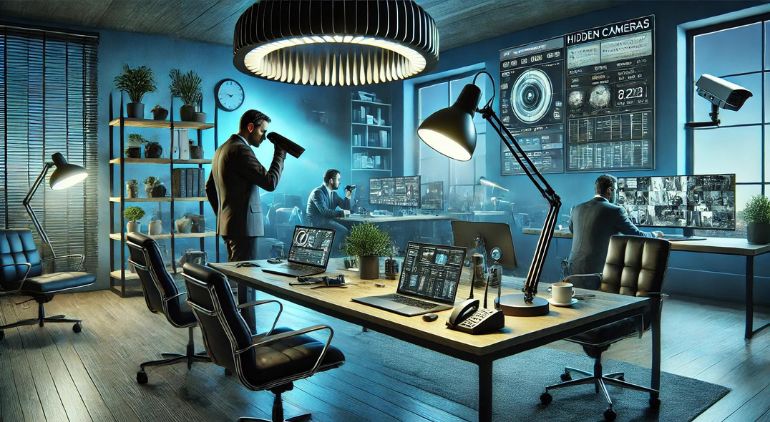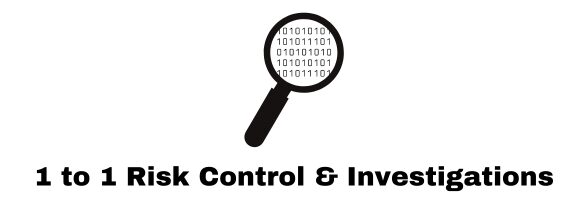405-458-5710
Confidentiality Guaranteed
405-458-5710
Confidentiality Guaranteed
You are Reading:
-
1 to 1 Risk Control & Investigations > Blog > Hidden Cameras > How to Check a Room for Hidden Cameras

Jul
How to Check a Room for Hidden Cameras
Understanding the Need: In today’s digital age, the threat of hidden cameras in private spaces is a growing concern. Whether you’re in a hotel room, a rental property, or even your own home, ensuring your privacy is paramount. Hidden cameras can be used for malicious purposes, and knowing how to detect them can protect your personal privacy and security.
Visual Inspection: The first step in checking for hidden cameras is a thorough visual inspection. Look around the room for any unusual objects or items that seem out of place. Hidden cameras are often disguised as everyday objects such as smoke detectors, clocks, air purifiers, picture frames, and even electrical outlets. Pay close attention to these items and inspect them carefully.
Use a Flashlight: A simple but effective method to detect hidden cameras is to use a flashlight. Turn off all the lights in the room and use the flashlight to scan the area. Hidden cameras often have lenses that reflect light, making them easier to spot in a dark room. Shine the flashlight slowly over suspicious areas and look for any glints or reflections that could indicate a camera lens.
Check for Unusual Wires: Hidden cameras need power, which means they are often connected to power sources via wires. Check behind furniture, appliances, and other objects for any unusual or unexplained wires. Be particularly cautious of wires leading to objects that wouldn’t typically require power or have visible wiring.
Inspect Mirrors: Some hidden cameras are placed behind mirrors using a two-way mirror technique. To check if a mirror is a two-way mirror, place your fingertip on the glass. If there is a gap between your finger and its reflection, it’s a regular mirror. If your finger directly touches its reflection without a gap, it could be a two-way mirror with a camera behind it.
Use a Camera Detector: Specialized camera detectors are available on the market that can help identify hidden cameras. These devices can detect the radio frequency (RF) signals that cameras emit. Simply turn on the detector and move it around the room, especially near suspicious objects. The detector will alert you if it picks up any RF signals, indicating the presence of a hidden camera.
Listen for Unusual Sounds: Some hidden cameras emit a faint buzzing or clicking sound. While this method is less reliable, it’s worth paying attention to any unusual sounds in the room. Turn off all electronics and appliances, and listen carefully. If you hear any strange noises, investigate the source to ensure it’s not a hidden camera.
Scan for Wi-Fi Networks: Many modern hidden cameras are connected to Wi-Fi networks. Use your smartphone or laptop to scan for available Wi-Fi networks in the area. Look for any suspicious or unfamiliar networks, especially those with strong signals. Hidden cameras often create their own network or connect to an existing one, and identifying these networks can help you locate them.
Check Vents and Air Ducts: Vents and air ducts are common places for hidden cameras. They provide a clear line of sight and are often overlooked. Use a flashlight to inspect these areas thoroughly, and look for any unusual objects or devices. If you find anything suspicious, investigate further to determine if it’s a hidden camera.
Examine Electronics: Electronics such as alarm clocks, radios, and speakers can be modified to contain hidden cameras. Inspect these devices carefully, and look for any signs of tampering or additional components that don’t belong. If you’re unsure, consider unplugging the device and examining it more closely.
Hire a Professional: If you’re still concerned about hidden cameras after conducting your inspection, consider hiring a professional to sweep the area. Professional bug sweepers have specialized equipment and expertise to detect even the most sophisticated hidden cameras. This is especially recommended for high-risk situations or areas where privacy is critical.
Legal Considerations: It’s important to be aware of the legal implications of finding and removing hidden cameras. In many places, it is illegal to install hidden cameras in private areas without consent. If you find a hidden camera, document it carefully, take photographs, and contact law enforcement to report the incident. Removing or tampering with the camera yourself may have legal consequences, so it’s best to seek professional advice.
Trust Your Instincts: Finally, trust your instincts. If you feel uncomfortable or have a suspicion that you’re being watched, take action. Your privacy and security are paramount, and it’s better to be cautious than to ignore potential threats. If something doesn’t feel right, investigate further and take the necessary steps to protect yourself.
Conclusion: Ensuring your privacy by checking for hidden cameras is an important step in today’s digital world. By conducting a thorough visual inspection, using tools like flashlights and camera detectors, and being aware of unusual signs, you can effectively identify and address hidden cameras. Remember to consider legal implications and seek professional help if necessary. Protecting your privacy is essential, and these steps can help you feel secure in any environment.
- AI
- Bug Sweeps
- Car Security
- Cyber Crime
- Cyber-Stalking
- Digital Forensics
- Fraud
- Geo-Political
- GPS Tracking
- Hidden Cameras
- Identity Theft
- Investigations
- Misinformation
- Mobile Device Forensics
- Mobile Device Security
- Operational Security
- Privacy
- Psychology
- Situational Awareness
- Social Media Investigations
- Stalking
- Surveillance
- Uncategorized
